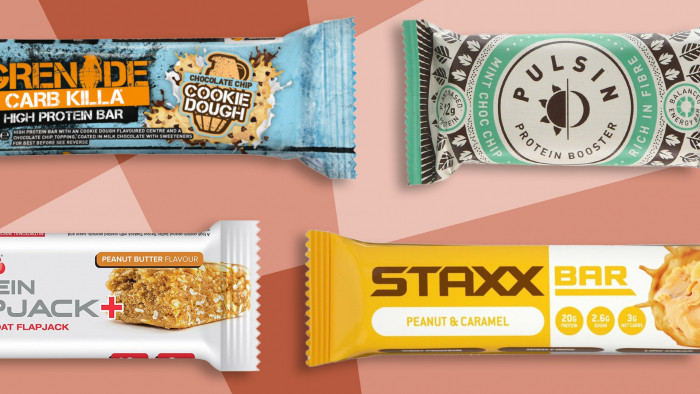So how’s your January fitness regime going? Occasionally dragging yourself to the gym to watch Come Dine With Me from a treadmill? Trainers mouldering under your desk?
Thought so. We’ve all been there – a lack of time and a dearth of variety can stall anyone. Which is why we suggest you cut the half-arsed approach and take extreme measures.
For this special, weight-clanking edition of Man: Machine we not only sent out four of our own to explore hardcore exercise trends, but we also spoke to four fearless fitness heroes to provide you with enough inspiration to drag you out of your winter rut.
Whether you’re hellishly busy or lacking motivation, these pages are the closest you will get to an all-in-one muscle-building, fat-burning pill. And if you to want pump iron like Arnie, we’ve got that covered as well...
Krav Maga
Hollywood-approved Israeli self-defence technique that builds strength, sculpts abs and aids dark alley confidence Andrew Dickens enlists for a bone-crunching first session
“Forgive me, Andrew,” says the large man in front of me. Before I can even think the ‘w’ of ‘why?’ his foot flashes upwards and makes contact with my genitals. As I drop to my knees, my unfinished question is answered.
Not your normal induction to a fitness class – no tips on cross-trainer etiquette or how to use the snack machine, but then this is no normal class. This is Krav Maga, the self-defence system (not martial art – for your own sake never call it a martial art) beloved of Hollywood action heroes such as Bond and Bourne, plus Israeli special forces. The large man is Klaudius Mitwicki, chief instructor at Krav Maga London, and he’s actually very nice. Really.
I should clarify that Krav Maga classes aren’t about upping the UK’s adoption rates. For one, I’m wearing a groin protector, which dulls the pain to ‘bearable on a short-term basis’, and two, it’s just about the most fun I’ve ever had getting fit.
For those of you unaware of Krav Maga, it’s an efficient method for extricating yourself from dangerous real-world situations (muggings, drunken haymakers, guns being pulled on you and the like). Its roots lie in the street-fighting skills of a Hungarian Jew, Imi Lichtenfeld, who used a combination of boxing and wrestling to defend against anti-Semitic attacks in Bratislava in the Thirties.
In the Forties he was recruited by a Palestinian Jewish paramilitary group Hagganah and – after the formation of Israel – by the Israeli Defence Forces (IDF), where his system remained secret until Lichtenfeld retired to teach a civilian-friendly version of Krav in the Sixties.
“I have all kinds of students – mine range from age 16 to 72 – coming to my classes, and for different reasons, but they all get the same benefits,” says Mitwicki.
“Many of my clients are bored with the gym – they’re bored with doing the same thing every day. Krav Maga doesn’t just make you fit, it teaches you a way of thinking, a way of behaving to defend yourself. You’re getting fit, but you’re not thinking about exercising – you’re always learning. It’s definitely becoming more popular.”
It’s true. Gyms bore me, but the only time I feel like I’m exercising for exercise’s sake today is during the warm-up, which involves a lot of stretching, rotating of joints and some circuit work: press-ups, squat-thrusts and sit-ups.
“Everything we do helps with self-defence and with fitness, awareness and confidence,” Mitwicki continues. “You do cardio to build endurance in case you face multiple opponents. You build strength, because you’re interacting with people, pushing and pulling like human weights, and because you have to keep getting off the ground.
It builds confidence in a confrontation and elsewhere, too. People tell me that it even helps in business. They say they feel more confident and more assertive.”
We should point out here that Mitwicki or ShortList Media Ltd don’t condone physical violence in the boardroom. Not unless it’s a deal-clincher, anyway.
After the warm-up, it’s all fun and games. And throttling, kicking, punching, grappling, gouging and slapping. We begin with a game where we have to try to touch each other’s shoulders. Just a game but, as Mitwicki points out, I’m panting heavily afterwards. Even more so when he makes me do a press-up for each of the 20 touches he made.
Next, we work on a few basics; the stance, how to move and where to look (awareness of your surroundings is key in Krav Maga – the end goal is always to escape from a situation), before getting to the bit I’ve been waiting for: the key to the whup’ass can.
Mitwicki begins with techniques to defend against being strangled, from the front, side and rear. The scratches and bruising around my trachea illustrate an absence of kid gloves. He teaches me the principles behind removing an assailant‘s hands, followed by counter-attack techniques including punches to the throat, kicks to the knee and the most effective way to strike a man’s – you guessed it – groin (a motion best described as a loose-wristed upward slap).
“Now I’m going to stress you out,” he says, before stressing me out.
He tells me to close my eyes, making me feel extremely vulnerable. I know he’s going to grab my throat, but I don’t know when, or from which angle. He does it about 25 times and, to my pride and pleasure, after just 45 minutes of training, I react pretty well every time – swiftly escaping from Mitwicki’s grip and countering with lightning-quick jabs to his throat. All with my technique at least roughly correct.
The next half an hour is spent learning the various ways you can repel knife attacks, both from distance (a kick to the solar plexus) and up close (a ‘360’ defence, consisting of a simultaneous wrist-block and throat-punch, followed by a swift groin kick). Mitwicki also demonstrates what he would do if I ever tried to bear hug him. This basically involves gouging my eyes before pushing my head back and then punching me in the throat. No, really, he is very nice. When the class comes to an end, I find myself mainly feeling three things: bruised, exhausted and hard as nails. Yes, parts of me hurt – though Mitwicki assures me that my bones will toughen over time – but I’ve had a workout and learned some important skills that could save my life at the same time. No, really.
Thanks to The Southbank Club; southbankclub.co.uk. For more on Krav Maga, go to Krav-maga-london.co.uk
Tempo running
Want to blast boredom and shave minutes off your PB? Howard Calvert tests threshold trainingAs a runner, there are two problems I battle with: 1) how to get faster, and 2) how not to get bored. Tempo training, I was told, could solve both. Even Mo Farah does it.
I met Running With Us coach and Saucony ambassador Nick Anderson to teach me this elite fitness measure. The ideal session is 45 minutes, with a slow 10-minute warm-up, four sets of five minutes at threshold (80 per cent of capacity), with two minutes recovery at near walking pace between each and a seven-minute warm-down jog to finish.
The key is finding your threshold. Anderson calls it “controlled discomfort” – put simply, you’re there when a conversation consists of two or three words before you have to take a breath. For the more experienced, it’s the pace you’d run between a 10k and a half marathon.
We set off, and the first 10 minutes is easy. It feels like we’re barely above walking pace. Then I remember this is just the warm-up. “Most people tear off,” says Anderson. “But warming up, then working at your threshold, is significantly more effective.”
We take on the first five-minute run at threshold. I struggle to find my 80 per cent, almost sprinting, and I run out of breath quickly.
I soon build into an energy-sapping rhythm of threshold run and recovery jog followed by an all-too-brief break. I ask (in gasping three-word segments) how this is different to interval training. “Most people assume interval training is where you run as hard as possible,” says Anderson. “You start to work without oxygen, and that puts people off. It teaches you to get fitter for a 5k, but threshold training will make your 10k, half marathon and marathon times quicker.”
Anderson tells me to add this workout into my training to see my PBs come down. “For a perfect week of training, do one long run, one threshold session, one ‘wind-up’ run [increase your pace every 15 minutes for 45 minutes] and one easy pre-breakfast run.”
On the third threshold run, I start to find my pace. I can barely utter one word, let alone three, and I’m pushing myself more. It feels good. I’ve finally added interest and an edge to my regular run. If only I had the energy for a Mobot...
Altitude training
Ben Isaacs grabs a St Bernard (well, his travel card) to take on the latest in time-saving fitness technology
When I was told I had to train at altitude, I was excited. Would it be NFL drills at Mile High Stadium in Denver? Or working out in the Alps?
I needn’t have got my passport out. My trip took me to Bank in London and the nearby Sweatshop flagship store. In the lofty heights of the first floor is the Altitude Centre – a sealed room with air replicating 2,750m above sea level.
That’s more than 1km higher than if you moved the Shard to the peak of Ben Nevis and stood on the top. Before I entered the room I had to get checked out – blood pressure test, health questionnaire, next of kin’s phone number. Exercise at extreme heights is serious business.
My trainer had me do some interval splits on a running machine wearing a heart monitor. He noted my speed and heart rate on one of the displays. The beauty of running at altitude is that the lack of oxygen makes your heart work harder.
This doubles the effect of cardiovascular exercise, thus halving the time needed to become a faster runner, get fitter or lose weight. As I reached the final sprint of my short (15-minute) run, the screens revealed my heart rate had entered the VO2 Max zone. When your heart is beating this fast from exercise, you have surpassed ‘hardcore training’ and entered the highest level your body can endure. The result? Fat-burning faster than a football shirt on a bonfire.
Amazingly, I was no more out of puff than if I’d been running in a gym. It was as though the air itself was doing the hard work for me.
If you normally run for half an hour in the gym you would get double the benefit doing it at altitude – an hour of fitness development and fat-burning for 30 minutes of your time. Here in the heart of Britain’s financial centre, that’s a pretty good return on your investment.
From £28 a session; altitudecentre.com
Intense intervals
Joe Ellison goes to hell and back with an unbearably tough 666 Training session
My trainer Dan Corbett – with his bleached Mohawk, tattoos and biceps that suggest he could bench-press a fridge freezer – cuts an imposing figure. He tells me muscles take 10 seconds to recover from strenuous exercise, which is why he’s designed a series of workouts to exploit this speedy recovery. It’s an even more full-on addition to the high-intensity interval training (HIIT) market.
My session is V20 Hell: five six-minute (hence the ‘666’ name) cardio and plyometric exercises, each consisting of 20-second-long sets of flat-out reps, with 10-second rests between each and 30 seconds’ recovery between exercises.
I start with bunny hops. With two hands on a bench, I whip my body from one side to the other, touching my toes only once. Two sets down and I’m uncomfortable. My arms feel heavy, hips sore, trainers concrete-tipped and I’m not even halfway through.
There’s barely enough time to slurp an energy drink before my next task, a three-step shuffle in a squat. I have to give everything I’ve got at all times – tough when my glutes and quads are being tested to their limit.
By the next interval I’ve hit a wall. Sitting down isn’t allowed, as I’ll compress my lungs, making it harder to breathe, so instead I slump against a mirror. The rest doesn’t last long and I’m soon performing sets of heel-kicks with simultaneous overhead claps.
Six minutes on, now beset by aching calves, I’m thrown into some high-knee lifting, during which Corbett yells at me to raise my knees higher on each set. But, apart from the sort of grunting an Eastern European tennis player would be proud of, there’s not much more I can offer.
Twenty-five minutes of 20-second flat-out training has taken its toll. “Sick is only a state of mind,” says Corbett after I gesture that I feel like throwing up. I prepare for the final drill – lying on my back before getting up without using my hands, and repeating.
Dehydration coupled with the intense physical effort has my head pounding. Worse still, it feels as if time is standing still, until, mercifully, I hear his countdown – “Ten, nine, eight…”
Once finished, I’m helped to my feet, panting too hard to crack a smile. I hobble back to the changing room counting the sore areas of my body. Around 666, I reckon.
Latest


Ten things you need to know about Hyrox


Is clubbing actually good for you? We asked an expert


Horticulturist shares tips on how to urban garden
Related Reviews and Shortlists


Best gifts for runners that they'll actually want and use






